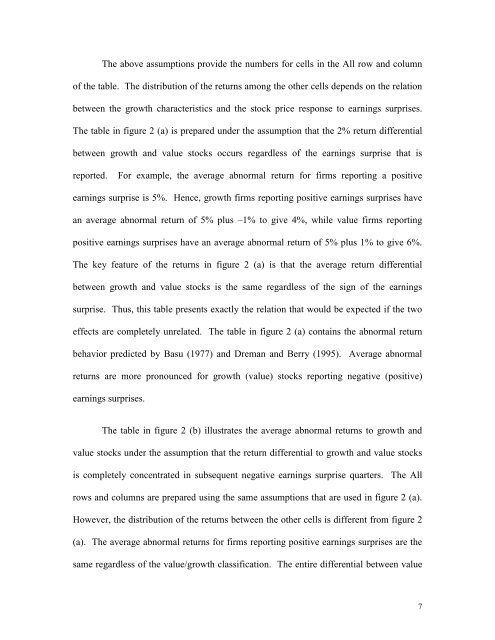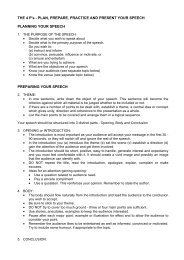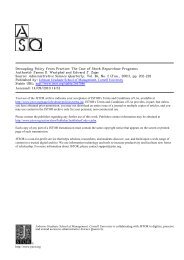Earnings Surprises, Growth Expectations, and Stock Returns:
Earnings Surprises, Growth Expectations, and Stock Returns:
Earnings Surprises, Growth Expectations, and Stock Returns:
Create successful ePaper yourself
Turn your PDF publications into a flip-book with our unique Google optimized e-Paper software.
The above assumptions provide the numbers for cells in the All row <strong>and</strong> column<br />
of the table. The distribution of the returns among the other cells depends on the relation<br />
between the growth characteristics <strong>and</strong> the stock price response to earnings surprises.<br />
The table in figure 2 (a) is prepared under the assumption that the 2% return differential<br />
between growth <strong>and</strong> value stocks occurs regardless of the earnings surprise that is<br />
reported. For example, the average abnormal return for firms reporting a positive<br />
earnings surprise is 5%. Hence, growth firms reporting positive earnings surprises have<br />
an average abnormal return of 5% plus –1% to give 4%, while value firms reporting<br />
positive earnings surprises have an average abnormal return of 5% plus 1% to give 6%.<br />
The key feature of the returns in figure 2 (a) is that the average return differential<br />
between growth <strong>and</strong> value stocks is the same regardless of the sign of the earnings<br />
surprise. Thus, this table presents exactly the relation that would be expected if the two<br />
effects are completely unrelated. The table in figure 2 (a) contains the abnormal return<br />
behavior predicted by Basu (1977) <strong>and</strong> Dreman <strong>and</strong> Berry (1995). Average abnormal<br />
returns are more pronounced for growth (value) stocks reporting negative (positive)<br />
earnings surprises.<br />
The table in figure 2 (b) illustrates the average abnormal returns to growth <strong>and</strong><br />
value stocks under the assumption that the return differential to growth <strong>and</strong> value stocks<br />
is completely concentrated in subsequent negative earnings surprise quarters. The All<br />
rows <strong>and</strong> columns are prepared using the same assumptions that are used in figure 2 (a).<br />
However, the distribution of the returns between the other cells is different from figure 2<br />
(a). The average abnormal returns for firms reporting positive earnings surprises are the<br />
same regardless of the value/growth classification. The entire differential between value<br />
7







